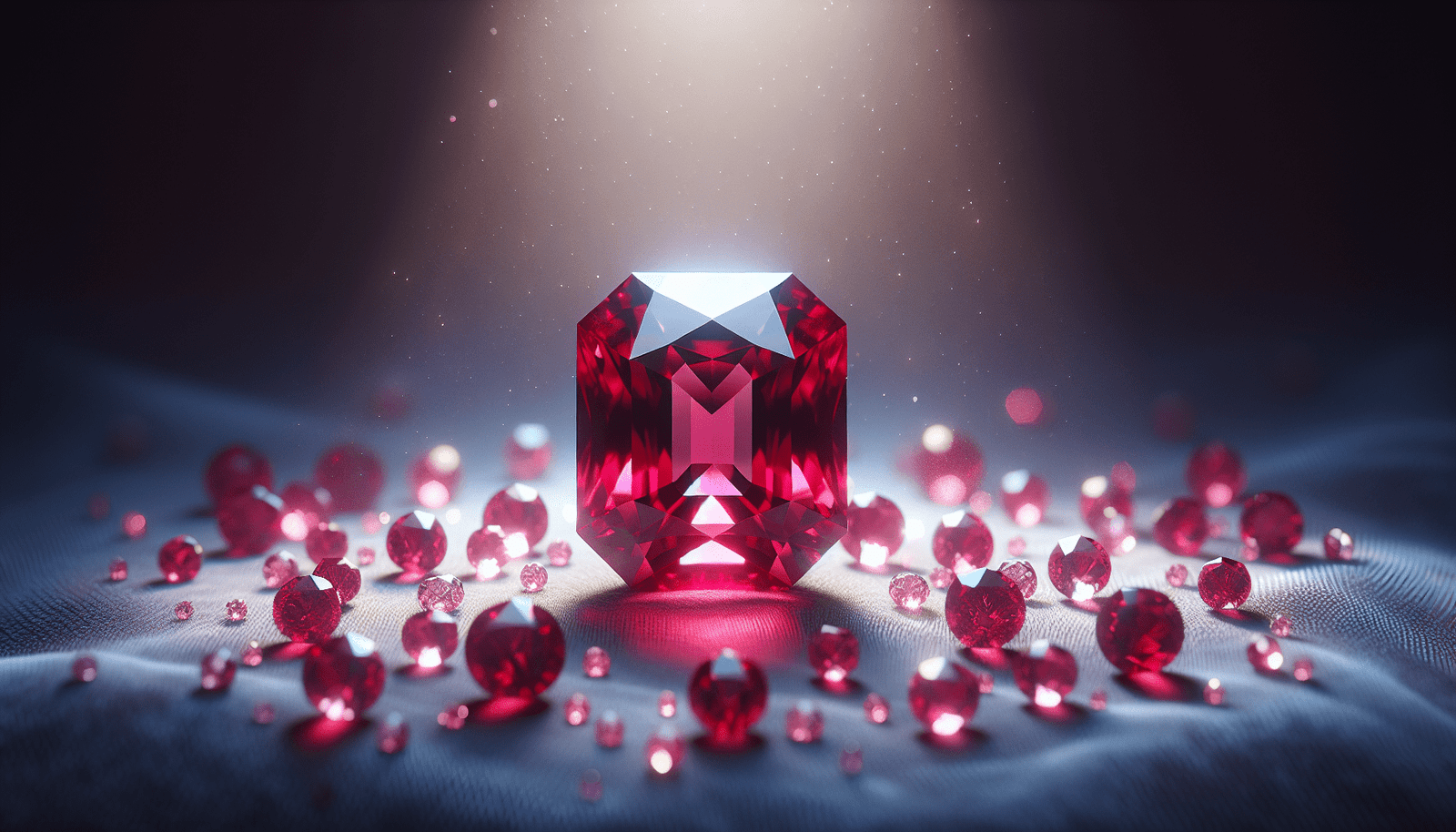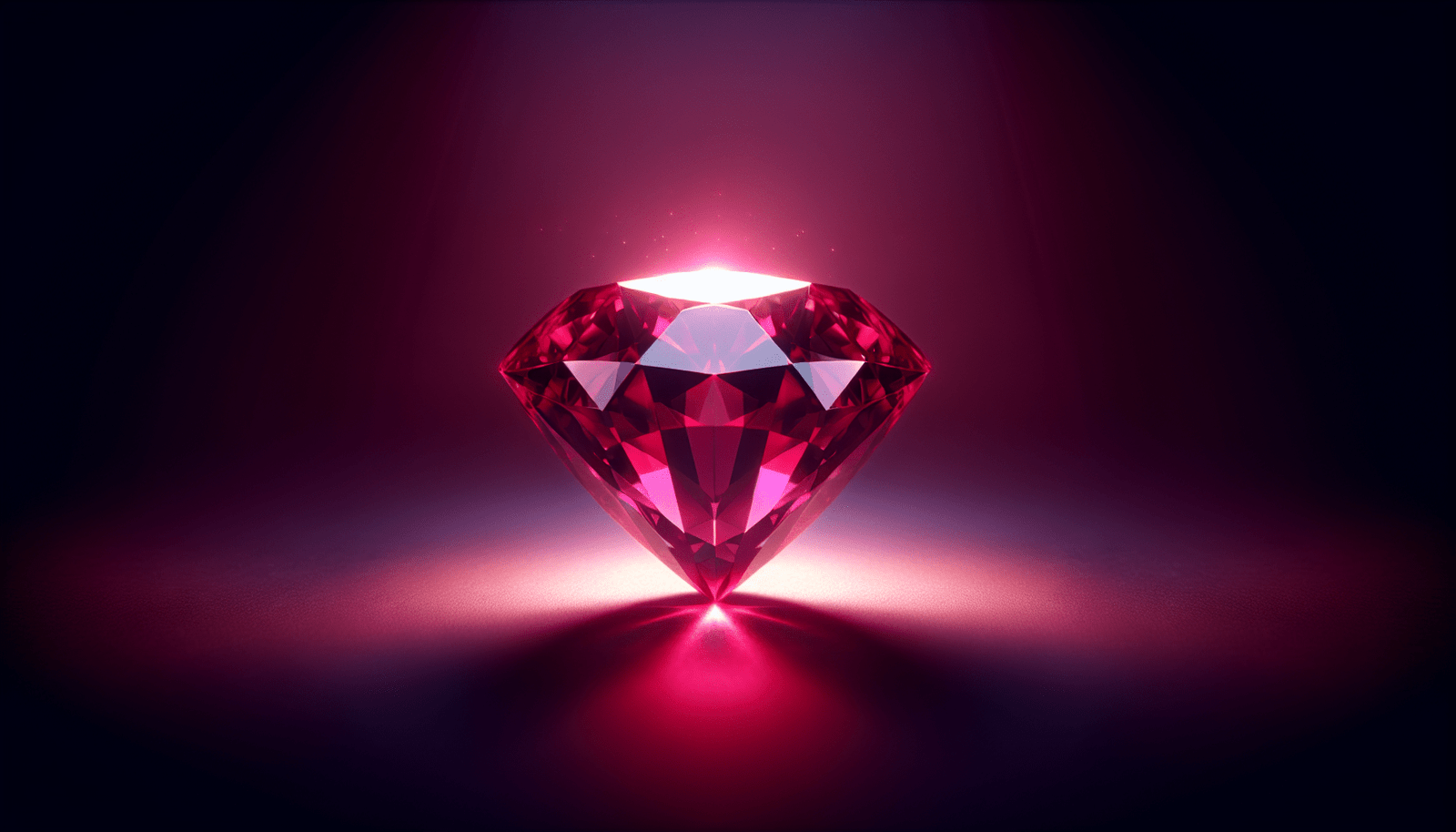What comes to mind when you think of the ruby gem? Is it its intense red color, perhaps its association with royalty, or maybe its rumored magical properties? You’re not alone if these thoughts pop up, and you might be surprised to learn just how much symbolism this gem carries with it.

A Historical Glimpse into Ruby
Ancient Civilizations and Their Ruby Fascination
Historically, ruby has held a special place in various ancient civilizations. Over 2,000 years ago, rubies were part of trade along China’s North Silk Road. The ancient Hindus regarded it as “Ratnaraj,” meaning “king of precious stones.”
Cultural Significance and Symbolism
In ancient Burma (now Myanmar), warriors inserted rubies into their skin to make them invincible in battle. Kings and queens across various cultures wore them as a symbol of power and status. In medieval Europe, the ruby was believed to ensure good health, love, and wisdom to its owner.
Ruby in Modern Times
Anniversaries and Milestones
Today, the ruby holds strong significance in celebrations. It is the traditional gemstone for the 40th wedding anniversary, representing enduring love and passion. People still gift rubies to convey love and courage.
Market and Value
Currently, rubies are among the most valuable gemstones on the market, commanding some of the highest per-carat prices. Mining areas like Myanmar, Thailand, and Sri Lanka are renowned for producing the finest rubies.
| Region | Unique Traits |
|---|---|
| Myanmar | Pigeon’s blood color, deep red |
| Thailand | Darker hues, often resembling garnet |
| Sri Lanka | Pinks and lighter reds, known as “Ceylon rubies” |

Symbolism and Allegorical Roots
Passion and Love
Rubies are synonymous with love and passion. The vibrant red is believed to stir the heart, representing fervor and strong emotions. This association makes rubies popular choices in engagement rings and anniversary gifts.
Power and Courage
Historically, warriors adorned themselves with rubies, believing the gemstone provided physical protection and invincibility. This perspective has evolved to symbolize internal strength and courage today.
Wealth and Prosperity
Considering its regal associations, it’s no surprise that rubies symbolize wealth and prosperity. Wearing a ruby is often believed to attract financial success and opportunities.
Metaphysical Properties
Energy and Healing
Many assert that rubies carry strong metaphysical properties. Said to boost energy and vigor, rubies can potentially sharpen the mind and increase concentration.
Emotional Stability
Some believe that rubies can bring emotional peace and stability. They are thought to quell anger and promote positive dreams, bringing joy and clarity to the mind.
Protection
Various cultures have considered rubies as talismans against evil. They’re believed to protect against misfortune and even prevent nightmares.

The Ruby in Literature and Art
Literary References
From Shakespeare to modern literature, rubies have made multiple appearances. In “Twelfth Night,” Shakespeare used the ruby as a symbol of beauty and longevity. In F. Scott Fitzgerald’s “The Great Gatsby,” the gemstone appears as a marker of opulent lifestyle.
Artistic Depictions
Rubies have graced many a painting and art piece throughout the centuries. Their inclusion in artworks often adds a layer of sophistication and a visual representation of the traits they symbolize – love, power, and wealth.
The Process of Ruby Formation
Geological Conditions
Rubies are formed under extreme conditions deep within the Earth’s crust. They are created when aluminum, oxygen, and chromium undergo high pressure and heat. The chromium gives rubies their iconic red hue.
Mining Practices
Rubies are primarily mined in Myanmar, but also in countries like Madagascar, India, and Kenya. Mining methods vary from sophisticated machinery to simple panning methods, depending on the location and the extent of the reserves.
Ruby and Technology
Synthetic Rubies
Natural rubies are rare and expensive, leading to the innovation of synthetic rubies. These lab-created rubies share the same physical and chemical properties as natural ones but come at a fraction of the cost.
Industrial Uses
Beyond jewelry, rubies have applications in technology. Synthetic rubies are utilized in lasers and other technological apparatus. Their clarity and durability make them excellent choices for precision equipment.
Choosing the Perfect Ruby
Color
When selecting a ruby, color is paramount. The ideal shade is a deep, vibrant red known as “pigeon’s blood.” However, the perfect color can vary based on personal preferences.
Clarity
Like all gemstones, clarity impacts a ruby’s value. While inclusions are common, too many can diminish its beauty and value. Some inclusions, however, are acceptable and can even indicate authenticity.
Cut and Carat
A well-cut ruby will sparkle brilliantly and showcase its rich color. As for size, bigger isn’t always better—balance between carat and quality is essential.
Certification
Always request certification from a reputable gemological institute when buying a ruby. This documentation ensures the ruby’s authenticity and details its characteristics.
Caring for Your Ruby
Cleaning
Rubies are quite durable but still require proper care. Clean them using warm soapy water and a soft brush. Avoid harsh chemicals which can damage the stone or setting.
Storage
Store rubies separately from other gemstones to avoid scratches. A fabric-lined jewelry box or individual pouches are excellent storage options.
Ensuring Durability
Although rubies are hard, they can still chip or fracture. Regular check-ups with a jeweler can ensure your gem remains in pristine condition.
Conclusion
There’s no denying the allure and significance of rubies. Whether it’s the historical weight they carry, their deep-seated symbolism in modern times, or their physical beauty, rubies encapsulate a myriad of meanings and uses. From representing power and passion to being integral in technological advancements, rubies continue to shine brightly in numerous facets of life. Next time you see a ruby, you’ll appreciate not just its physical beauty, but the rich tapestry of history and symbolism that it embodies.



